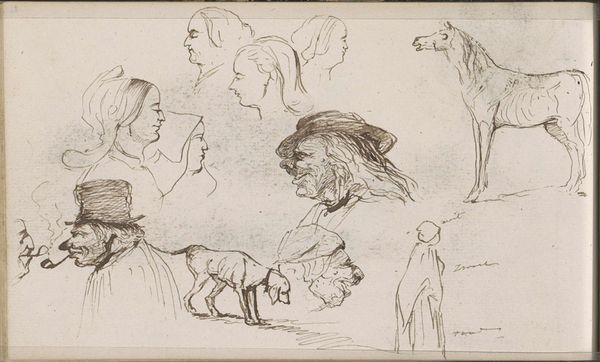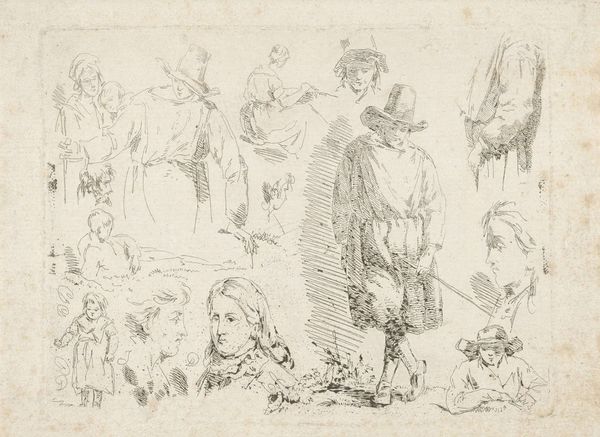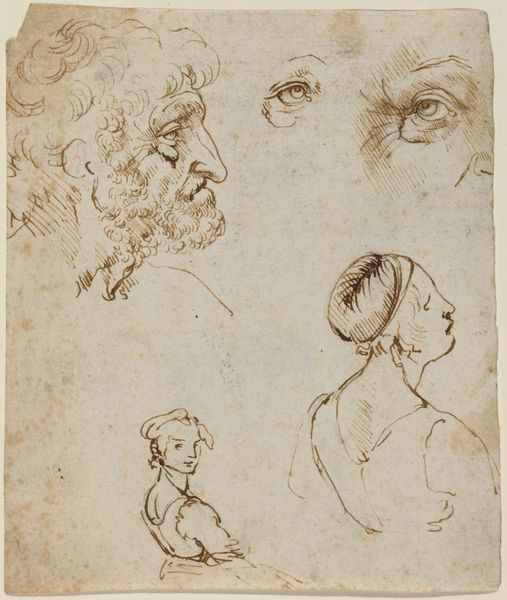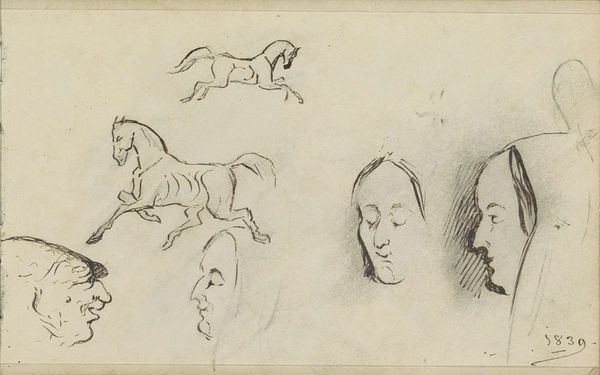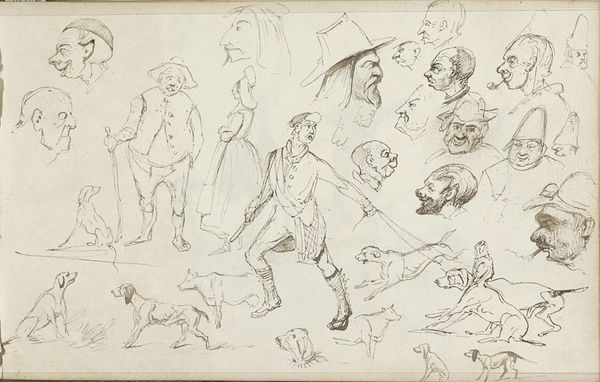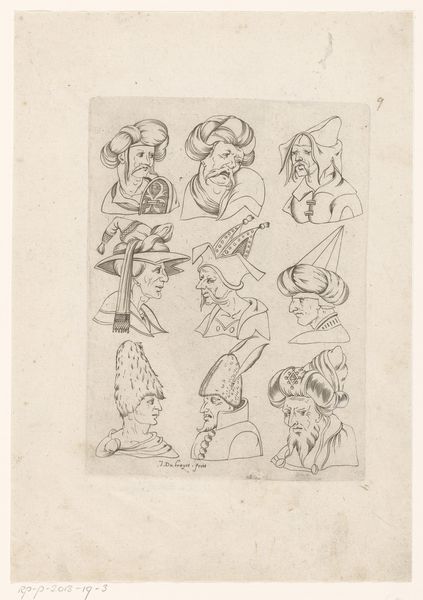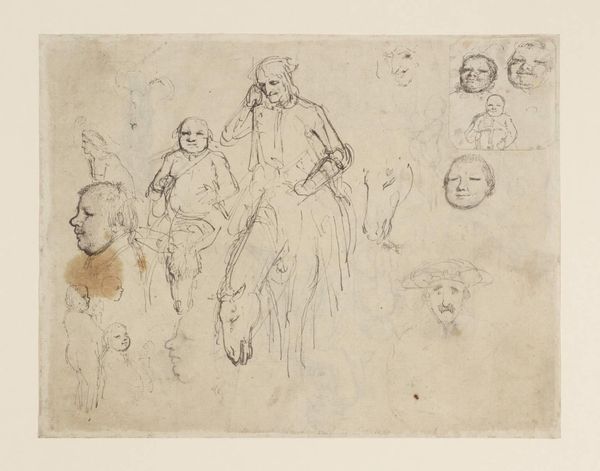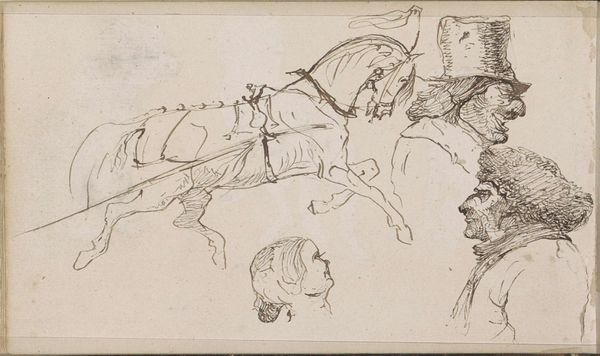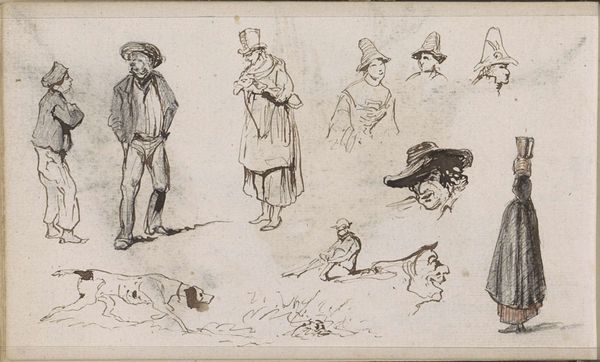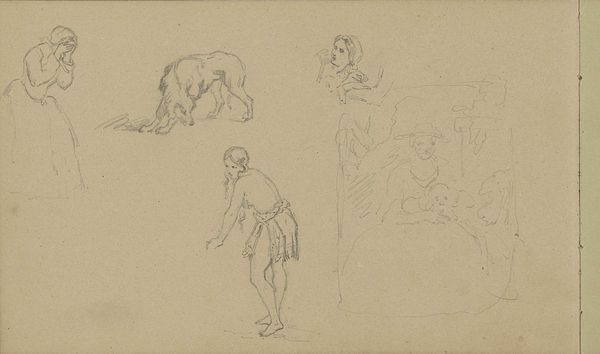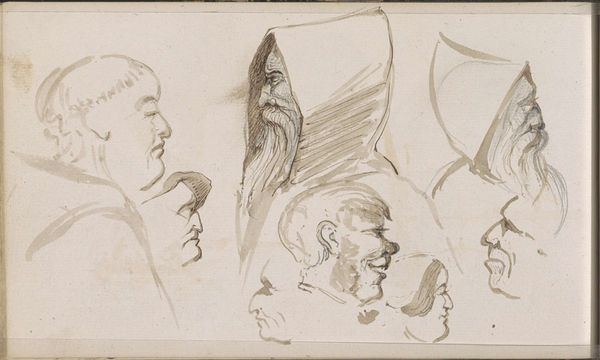
Galopperend paard, mannen- en vrouwenkoppen en een boerin 1864 - 1880
0:00
0:00
drawing, ink, pencil
#
portrait
#
drawing
#
pen sketch
#
pencil sketch
#
figuration
#
ink
#
ink drawing experimentation
#
pencil
#
horse
#
line
#
genre-painting
#
history-painting
Copyright: Rijks Museum: Open Domain
Editor: This drawing, "Galopperend paard, mannen- en vrouwenkoppen en een boerin," created between 1864 and 1880 by Johannes Tavenraat, uses pencil and ink. It reminds me of a sketchbook page, full of character studies and quick impressions. What stands out to you in terms of its visual elements? Curator: What arrests me is the inherent tension arising from the distribution of forms within the plane. Note the stark contrast in detailing – certain heads possess remarkable refinement, while others verge on caricature. This contrast is essential to Tavenraat’s visual language. How do these contrasts affect the unity of the work, or do you see unity as even the objective here? Editor: I think the varying degrees of completion create a sense of movement, like the artist was capturing fleeting ideas. The horse seems barely there, just a suggestion, which makes the more detailed faces seem even more prominent. Is there a hierarchy established through the level of finish? Curator: Precisely! The varying degrees of finish operate as visual cues, guiding the eye and implying a deliberate hierarchy. Observe the linearity; it's almost entirely contour-based. Line defines form and dictates spatial relationships. How does Tavenraat employ line to delineate space and volume? Does the line weight and density change, and if so, what are the implications? Editor: The lines around the woman in the lower left seem thicker, making her feel more grounded, while the horse feels almost ethereal because its lines are so light. Curator: Excellent. And where else do you see the effects of line weight informing the composition? Ultimately, this study offers a valuable glimpse into Tavenraat's process, doesn’t it? It almost functions as a visual record of his formal investigations. Editor: Definitely! I never considered how much information could be gleaned from an unfinished work just by analyzing line and form. Curator: Indeed. By focusing on those formal qualities, we begin to appreciate the intrinsic aesthetic of the sketch itself.
Comments
No comments
Be the first to comment and join the conversation on the ultimate creative platform.
